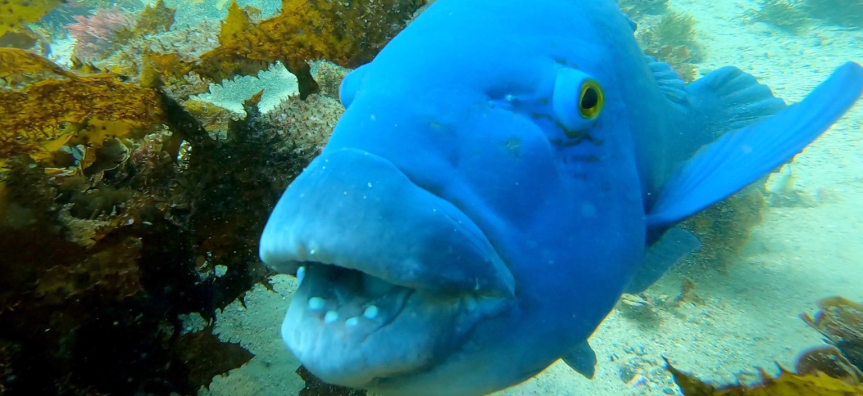
Sian Liddy, Marine Ecologist describes why Cabbage Tree Bay is important for Eastern Blue Gropers. The video contains overlay shots of Eastern Blue Groper and Sian observing their behaviour underwater in the bay.
Video text transcript
(Interview with Marine Ecologist Sian Liddy. Sian is sitting on the rocks overlooking Cabbage Tree Bay.)
Sian Liddy: My name is Sian Liddy and I’m a marine ecologist. The Blue Groper or Achoerodus Virdis is a species of wrasse that’s found along the east coast of Australia. It can reach up to 120 cm in length and it’s a very charismatic species that’s sought out by divers because of its inquisitive nature and its beautiful colouring. It forages on organisms like urchins using its very powerful jaws that are able to protrude and flip over the urchin and then eat the urchin from the bottom, avoiding the spines.
They actually change their sex throughout their lives, so they're not always a ‘blue’ Groper so to speak, they actually start out as juveniles that will be green in colour with blotches of white and then will become females that are reddish brown in colour before maturing at about the age of 18 to become the beautiful Blue Groper that we know and love.
Gropers spawn between the months of July and October each year and they release their sperm and gametes into the water column where they meet and form larvae. As the larvae settle and grow, they use sheltered seagrass habitats because it provides lots of protection from predators. In areas like Cabbage Tree Bay, they have these beautiful rocky reefs to forage and grow till they become adults. And males have been known to reach ages up to 35 years old.
Because its an aquatic reserve, you’re very likely to encounter Eastern Blue Groper in Cabbage Tree Bay. These are very friendly fish and most people that come down for a snorkel here get to see one.
